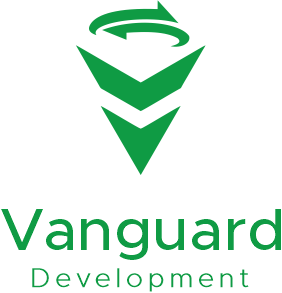Future-Proofing Your Projects: The Role of Flexible Financing Options
In the ever-evolving landscape of commercial development, flexibility in financing has become critical to a project’s long-term success. Market shifts, economic fluctuations, and changing regulations all underscore the importance of securing financing options that can adapt as needs and circumstances evolve. Future-proofing a project means choosing financing structures that allow for adaptability, scalability, and resilience. Here’s how flexible financing options can help developers navigate uncertainty and maximize the potential of their investments.
1. Adapting to Market Volatility
In a market where economic conditions are unpredictable, having flexible financing options allows developers to withstand downturns and take advantage of opportunities during favorable conditions. This agility can make the difference between a stalled project and one that thrives despite challenges.
- Benefits: Financing options such as floating-rate loans or adjustable loan terms give developers the ability to respond to shifts in interest rates and inflation.
- Example: A developer financing a large retail center might choose a floating-rate loan, which allows them to benefit from lower interest rates in stable periods while offering flexibility to adjust as rates fluctuate.
2. Leveraging Phased Financing for Scalable Growth
Flexible financing structures that support phased funding allow projects to be scaled up or adjusted incrementally as they progress. This approach is particularly beneficial for large, multi-stage developments like mixed-use complexes, which may require different levels of funding at various stages.
- Benefits: Phased financing reduces upfront capital requirements and allows developers to secure additional funds as the project proves its viability and starts generating revenue.
- Example: A mixed-use development could start with initial financing for residential units, then secure additional funding for commercial spaces as occupancy rates grow, ensuring that resources align with project needs.
3. Future-Proofing with Convertible Debt Options
Convertible debt, which allows a loan to be converted into equity under specific conditions, provides developers with a versatile financing solution. It offers the benefits of debt financing initially, but with the option to switch to equity, minimizing financial strain if project cash flows change.
- Benefits: This hybrid approach offers the flexibility to adjust financing structures to fit evolving project goals, with the potential for lower repayments if converted.
- Example: In a high-growth urban development, the option to convert debt into equity can help developers secure initial funding while allowing future investors to buy in as the project gains value.
4. Accessing Lines of Credit for Operational Flexibility
A line of credit provides ongoing access to funds as needed, enabling developers to address unforeseen expenses or take advantage of new opportunities without committing to a rigid loan structure. This is especially useful for project expansions or adjustments driven by evolving market demands.
- Benefits: Lines of credit offer quick access to capital, making it easier to respond to unexpected needs like equipment upgrades or additional land purchases.
- Example: A developer working on a healthcare facility can draw from a line of credit to finance equipment upgrades, expanding services in response to community needs without delaying the overall project.
5. Using Bridge Financing for Transitional Phases
Bridge financing offers short-term funding that fills the gap between stages of a project, ensuring that developers can maintain momentum while waiting for long-term financing to be secured. This approach is often used to complete initial phases or acquire key assets.
- Benefits: By providing interim capital, bridge loans allow projects to proceed uninterrupted and can also help developers secure better terms on subsequent long-term financing.
- Example: For a developer acquiring a property for a large urban redevelopment, bridge financing can fund property acquisition and initial renovations until they qualify for longer-term, lower-interest financing.
6. Partnering in Joint Ventures for Shared Risk and Flexibility
Joint venture partnerships bring multiple stakeholders together, each contributing funds, expertise, or resources. These partnerships create a financing model that’s inherently flexible and allows the project to benefit from shared risk, pooled resources, and adaptable financing terms.
- Benefits: Joint ventures provide access to greater capital while spreading financial risk, making it easier to scale projects in line with market trends and strategic goals.
- Example: In a joint venture between a developer and a tech-focused REIT, the REIT might provide capital and technical expertise in exchange for partial project ownership, while the developer benefits from a lower initial capital requirement and access to cutting-edge technologies.
7. Securing Sustainable and ESG-Driven Financing
Environmentally and socially conscious financing options, such as green bonds or ESG-linked loans, not only help secure funds for sustainable projects but also appeal to a growing base of investors prioritizing ESG factors. This type of financing often comes with favorable terms, benefiting developers committed to sustainable practices.
- Benefits: ESG-driven financing can include incentives like lower interest rates for meeting sustainability goals, reducing long-term costs and enhancing project appeal to ESG-focused investors.
- Example: A developer planning an eco-friendly office complex can secure a green bond to fund energy-efficient building features, achieving cost savings while aligning with sustainability goals.
8. Retaining Flexibility with Mezzanine Financing
Mezzanine financing combines debt and equity, offering a flexible financing solution that can cover shortfalls or provide additional capital without the strict covenants of traditional loans. This type of financing is particularly useful for completing a project that is already generating cash flow but needs an extra boost.
- Benefits: Mezzanine financing typically requires no collateral, providing an extra layer of flexibility, and can be a valuable option for projects needing quick, flexible capital.
- Example: A hotel developer close to completion can use mezzanine financing to cover final construction costs, avoiding high-interest loans or equity dilution and instead repaying lenders through future revenue.


Leave A Comment